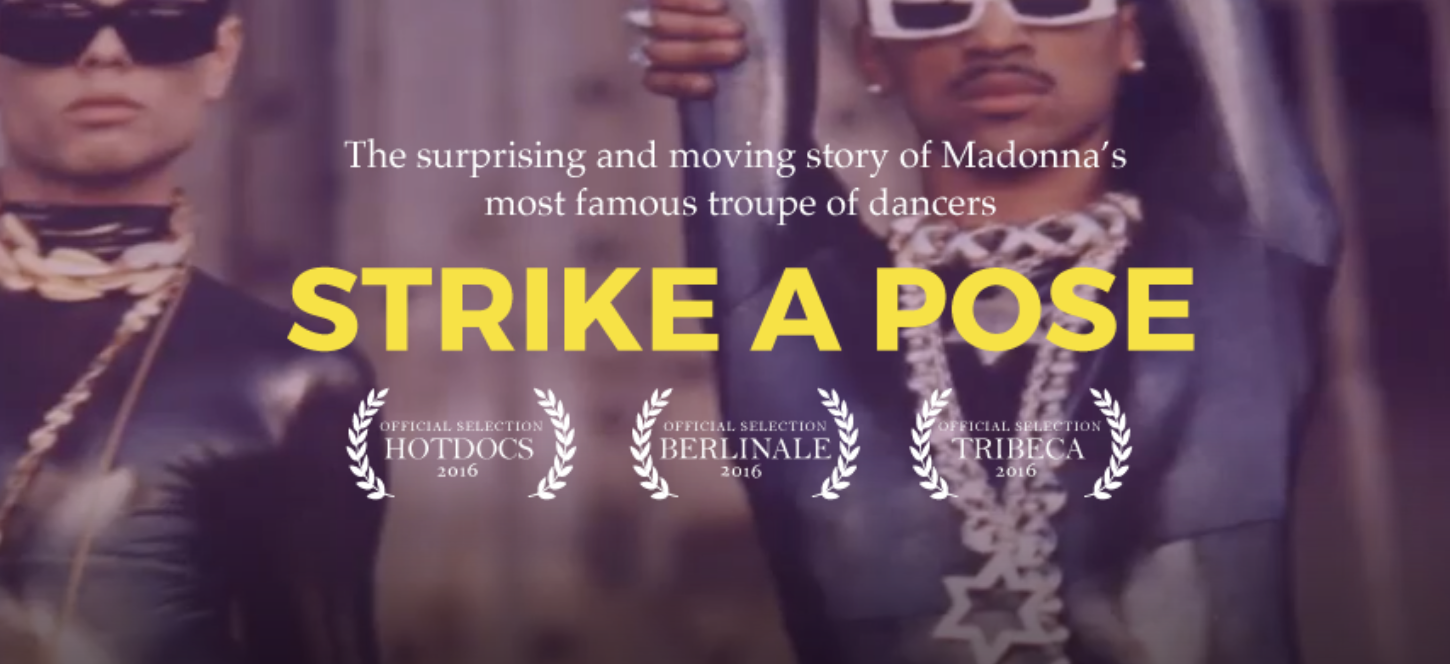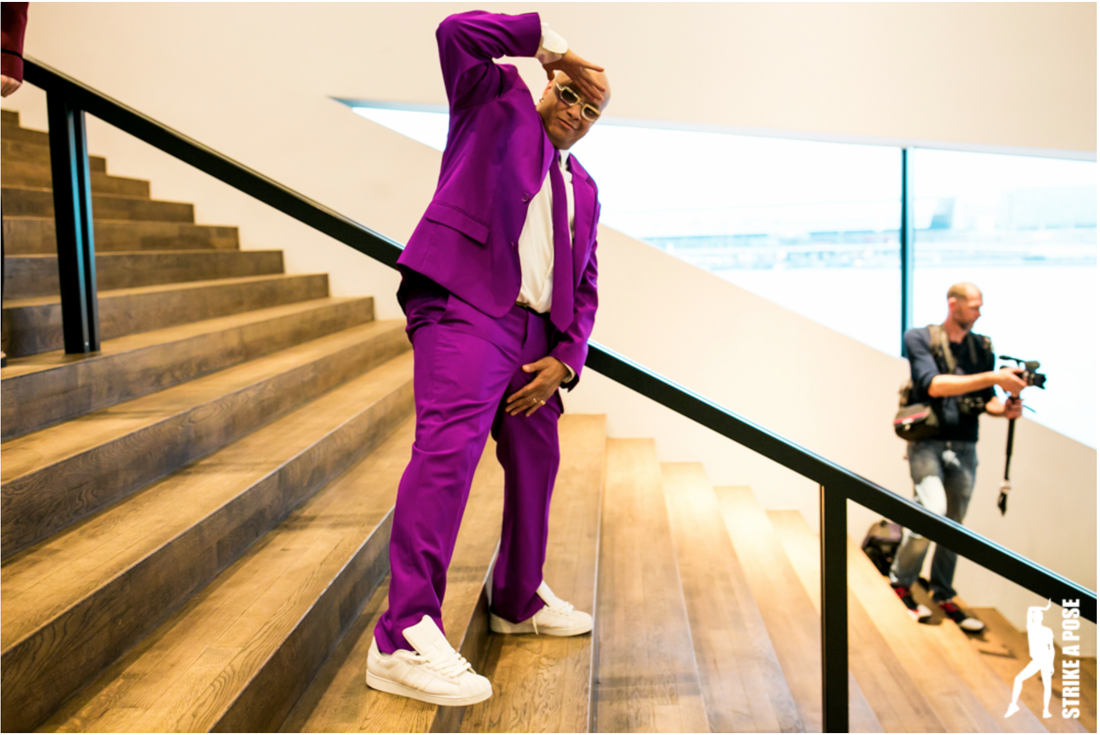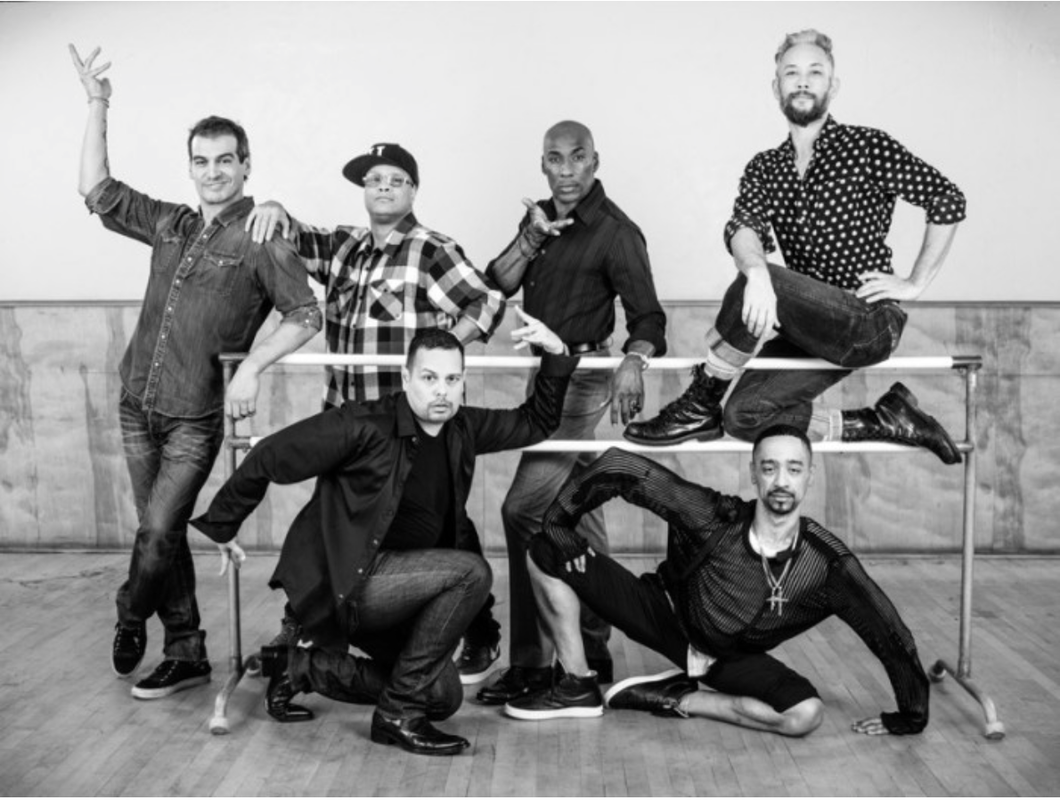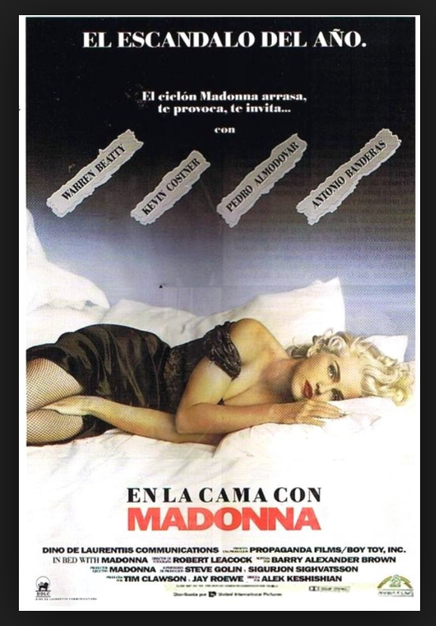|
Logo network to air film that reveals untold stories behind hit 1991 doc and Blond Ambition tour (This piece has been updated with the new air time for the documentary: tonight at 8pm ET/PT) In 1990 Madonna was as hot as magma, at the top of her game and the top of her fame. She circled the globe with her Blond Ambition tour, backed by seven sexy male dancers who captured their own measure of fame in Madonna's orbit. "Vogue," "Express Yourself," and "Like a Prayer" were some of the ecstatic numbers that highlighted that tour, canonized in the 1991 documentary Madonna: Truth or Dare. That film not only showed the brilliance of the dancers and Madonna in top form, but how tight a bond they seemed to form offstage, where the singer reveled in the role of mama to her flock of fuzzy young ducklings. The tour was about freedom -- freedom as a human being, freedom in regards to [speaking] the truth. More than 25 later, the surviving dancers recall that remarkable time in their lives in the new documentary Strike a Pose. The film directed by Ester Gould and Reijer Zwaan premieres on the Logo network tonight (Thursday, April 6) at 8pm ET/PT. "Each one of us would have taken a bullet for each one of us," Oliver Crumes III, the only straight guy among the dancers, says in the film. Blond Ambition and Truth or Dare represented only one of many phases (or guises) in Madonna's career, but for the dancers, inevitably, it was an experience that could hardly be matched. Part of the poignancy of the film derives from the assessment the dancers make of their younger selves. For some, sudden fame went to their heads, leading them down a destructive path of drug use and incessant partying. Some found themselves leading a kind of double life -- aglow in the spotlight, but privately harboring a very different self-image. "Faking that you're strong, faking that you're confident, faking almost all of it," as Carlton Wilborn puts it in Strike a Pose. The pose for him and fellow dancer Salim "Slam" Gauwloos was that all was glam in their world. In reality, both had been diagnosed as HIV-positive, and lived in fear of that being revealed at a time when intense stigma surrounded the disease. Dancer Gabriel Trupin died of AIDS in 1995 at the age of 26, keeping his illness a secret until close to the end of his young life. There was a whole other backstage that you didn’t get to see, that none of us were ready to talk about. Gauwloos said Truth or Dare ultimately gave viewers an incomplete picture of the dancers' real truth. "There was a whole other backstage that you didn’t get to see, that none of us were ready to talk about," he says. In 1992, a year after the release of Truth or Dare, Crumes, Trupin and dance captain Kevin Shea sued Madonna, alleging she had invaded their privacy while filming the documentary (the suit was later settled out of court). Trupin's mother appears in Strike a Pose, recalling how her son begged the singer to no avail to remove a scene from Truth or Dare which showed him kissing one of the other male dancers. The Madonna of Strike a Pose can be interpreted in multiple ways. Some may see her as ahead of her time, or her dancers', urging them to own their truths and not be ashamed of their sexuality. "The sort of daring, progressive message [of Truth or Dare] was that you could be gay and human. You can be gay and happy," Shea says in the new documentary. The dancers mostly recall Madonna with affection and warmth and describe her as genuinely nurturing. Some viewers may conclude she pushed her dancers to out themselves before they were ready, to suit her own image-making purposes.
There is a whiff of exploitation in the relationship between superstar and dance crew, with its inherent imbalance of power. Some may consider Madonna guilty of cultural appropriation (before such a concept was identified) for adopting voguing as her own. It was her dancers Luis Camacho and Jose Gutierez who first taught her those moves, which they had developed in New York's underground House Ballroom scene. But Strike a Pose isn't about recriminations or score settling. It's not even about nostalgia, really. It's more about a group of people taking stock of themselves decades after the experience of a lifetime. |
AuthorMatthew Carey is a documentary filmmaker and journalist. His work has appeared on Deadline.com, CNN, CNN.com, TheWrap.com, NBCNews.com and in Documentary magazine. |
- Home
- News
- Videos
-
Galleries
- 2019 Tribeca Film Festival
- Full Frame Documentary Film Festival
- 2019 SXSW Film Festival
- SXSW 2018 Gallery
- 2019 Sundance Film Festival
- Outfest 2018 Photo Gallery
- Outfest 2017
- Sundance 2018 Photos
- 2017 LA Film Festival
- 2017 Cannes Film Festival
- Tribeca Film Festival 2017
- SXSW 2017 Gallery
- 2017 Berlin Film Festival
- Sundance 2017 Gallery
- 2016 Los Angeles Film Festival
- Cannes Film Festival 2016
- SXSW 2016 Gallery
- Berlinale 2016 Gallery
- Sundance 2016 Gallery
- Filmmaker Gallery
- About
- Contact
Proudly powered by Weebly
- Home
- News
- Videos
-
Galleries
- 2019 Tribeca Film Festival
- Full Frame Documentary Film Festival
- 2019 SXSW Film Festival
- SXSW 2018 Gallery
- 2019 Sundance Film Festival
- Outfest 2018 Photo Gallery
- Outfest 2017
- Sundance 2018 Photos
- 2017 LA Film Festival
- 2017 Cannes Film Festival
- Tribeca Film Festival 2017
- SXSW 2017 Gallery
- 2017 Berlin Film Festival
- Sundance 2017 Gallery
- 2016 Los Angeles Film Festival
- Cannes Film Festival 2016
- SXSW 2016 Gallery
- Berlinale 2016 Gallery
- Sundance 2016 Gallery
- Filmmaker Gallery
- About
- Contact





 RSS Feed
RSS Feed